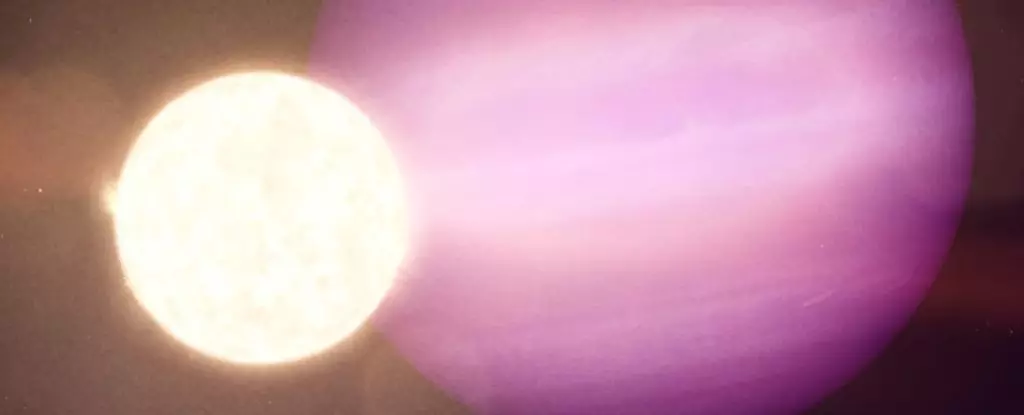In the vast expanse of the universe, discoveries about exoplanets continually ignite our curiosity about the cosmos beyond our Solar System. Among the most phenomenal recent findings is the detection of WD 1856+534 b, a super-Jupiter that orbits a white dwarf star located 81 light-years from Earth. This gas giant, with a mass approximately six times greater than Jupiter, not only exemplifies an intriguing class of planetary bodies but also raises profound questions about planetary survival in extreme celestial environments. Observed recently through the advanced capabilities of the James Webb Space Telescope (JWST), this exoplanet stands as a testament to the evolving capabilities of astronomical instruments and the relentless quest for knowledge about our universe and the potential for life beyond Earth.
The Game-Changing Role of JWST
The JWST, equipped with the Mid-Infrared Instrument (MIRI), has revolutionized our approach to observing distant planets. In a groundbreaking study led by Mary Anne Limbach and her diverse team of astronomers, critical insights into WD 1856+534 b were obtained. These observations confirmed not only the existence of this cold gas giant but also revealed that it is the coldest exoplanet ever documented, with an average temperature of just 186 K (-87 °C; -125 °F). This temperature, comparable to Earth, challenges preconceived notions about where and how life can exist.
By utilizing the Direct Imaging Method, astronomers can capture light reflected from an exoplanet’s atmosphere, allowing for an analysis of its composition. The presence of key chemicals such as oxygen, methane, and water could hint at potential biosignatures, vastly widening our understanding of habitability in environments previously considered inhospitable.
Insights into Planetary Dynamics near White Dwarfs
What makes WD 1856+534 b particularly fascinating is its orbit around a white dwarf star. White dwarf stars, once the cores of middle-sized stars like our Sun, have unique characteristics that provide rare opportunities for astronomers. The low luminosity of these remnants decreases the contrast challenges that often obscure our view of planets around more luminous stars. Consequently, it becomes feasible to study a planet’s atmospheric properties and orbital behavior even as it orbits close to these stellar corpses.
The study reveals that WD 1856+534 b has found stability in its orbit, pointing towards a narrative of survival and adaptation in the wake of its star’s evolution. As a white dwarf’s life cycle marks the end of typical stellar processes, understanding how planets respond to such drastic changes is crucial. This knowledge could inform theories about the formation and migration patterns of planets, shedding light on whether they can retain habitable conditions amidst the turbulence of post-main-sequence evolution.
The Future of Habitability Research
With astronomers gearing up for more observations, particularly a series scheduled for 2025, excitement is brewing around the potential discovery of additional planets within the WD 1856 system. Understanding whether WD 1856+534 b was perturbed into its current orbit or if other worlds exist around this unique star could unlock deeper truths about planetary development and habitability. The implications extend beyond mere observational curiosities; they could redefine our existing paradigms regarding where and how life may thrive in the cosmos.
As the team anticipates more data from the JWST, the insights gained from earlier observations using the Near-Infrared Spectrometer (NIRSpec) will enhance our understanding of the planet’s atmosphere. Notably, the evolution of atmospheric properties could provide indicators about the history of the planet’s climate, its chemical makeup, and its capacity for supporting life—a tantalizing prospect that continuously fuels scientific inquiry.
Broader Impacts on Astrobiology and Cosmology
The discoveries surrounding WD 1856+534 b signal a renaissance in exoplanet research, particularly in the domain of astrobiology and the search for life. Every finding, every measurement, pulls us closer to answering age-old questions: Are we alone in the universe? What does the potential for life elsewhere look like? By studying these distant worlds, we not only enrich our understanding of the cosmos but also enhance our appreciation for the fragility and resilience of life itself.
In this context, each revelation associated with WD 1856+534 b feels monumental, moving us decades forward in the astrobiological narrative. By honing in on the interactions between celestial mechanics and planetary atmospheres, we unlock cosmic secrets which might one day lead us to recognize life’s signatures in the most unexpected corners of the universe.
With the JWST and its groundbreaking technology, humanity finds itself on the precipice of extraordinary discoveries, ready to dive deeper into celestial realms and make sense of the vast, mysterious universe surrounding us.

